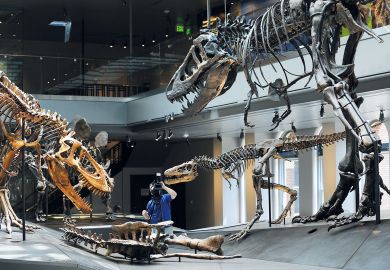“Knowledge is the foundation and source of good writing,” said the Roman poet Horace. That is especially true in academia, where the communication of knowledge gains is the very purpose of most writing.
But the veracity those gains depends on research integrity: transparency and best practice in the collection of data and the formulation of ideas. As the recent case of Stanford University president Marc Tessier-Lavigne reminds us, when research integrity slips, academic writing confounds its own purpose. Tessier-Lavigne announced his resignation after an enquiry found faults in his co-authored papers, his approach to correcting published errors and the management and oversight of his laboratories.
One important aspect of research integrity is taking responsibility for the content of papers. For all the attempts to change things, the climate of “publish or perish” persists in academia because authorship is often used as a key criterion in appointments and promotions. Yet there is great debate about how different disciplines and research cultures define authorship and contributions. Open science is just one movement advocating for more transparency in the research process, and this includes authorship.
Typically, authorship is considered to encompass responsibility for the quality and integrity of content, as well as collection and analysis of evidence. Open science advocates, however, are asking for more precision about contributions – including by research enablers such as librarians and technical staff. This might also encourage everyone to take more responsibility for the aspects of research programmes to which they are publicly identified as contributing.
There are examples of how this might be taken forward. The Contributor Roles Taxonomy (CRediT), devised in 2015, is one. This breaks down contributions into 14 categories: conceptualisation, (provision of) resources, data curation, (writing) software, formal analysis, supervision, funding acquisition, validation, investigation, visualisation, methodology, project administration, writing the original draft (including translation) and reviewing and editing it (both before external peer review and after it). That taxonomy is now an American national standard.
Such transparency answers a criticism of more traditional approaches to authorship. Some journal articles, in areas such as high-energy physics and clinical medicine, have hundreds of authors attributed to them. How is it possible to know who contributed what in this scenario? The CRediT taxonomy also helps address the problem of ghost authors – often support staff – who are omitted from more traditional author attributions despite playing important roles in research programmes.
Through its transparency, CRediT also supports collaborative approaches to research and acknowledges the contributions made by early career researchers to research activity. In this way, the CRediT approach is more sophisticated than general statements on authorial responsibilities, and some publishers have already adopted CRediT in their publishing portfolios, including PLOS and the American Chemical Society. The ORCID digital identifier system also supports all 14 CRediT contributor roles, so ORCID members who share this data can then have it accessed by other systems that interact with ORCID.
Yet while CRediT is making some advances, there are some valid criticisms of it. Its 14 contribution categories are heavily geared toward STEM subjects; academics in the arts, humanities and social sciences do not recognise some of the categories as referring to them. Data acquisition is a case in point. For many arts and humanities scholars, the building blocks of their research are not data but historical archives, rare books and artistic artefacts. CRediT needs to be developed with the needs of such researchers in mind.
In addition, some academics have asked whether classifying the nature of contributions gives adequate acknowledgement to the quantity and quality of each contribution. Can more be done to address this?
But while the discussion about the nature of authorship and contributions clearly has some way to run, it is equally clearly the way forward. Transparently distributing credit – and censure – where it is due will promote fairness and team science while discouraging the sorts of slack practices that got Tessier-Lavigne into trouble.
Paul Ayris is pro vice-provost for library, culture, collections and open science at UCL.
Register to continue
Why register?
- Registration is free and only takes a moment
- Once registered, you can read 3 articles a month
- Sign up for our newsletter
Subscribe
Or subscribe for unlimited access to:
- Unlimited access to news, views, insights & reviews
- Digital editions
- Digital access to THE’s university and college rankings analysis
Already registered or a current subscriber?








